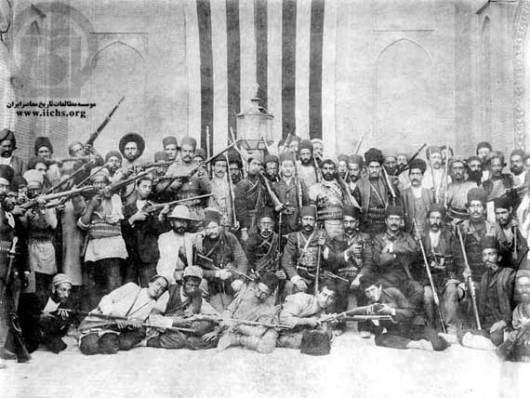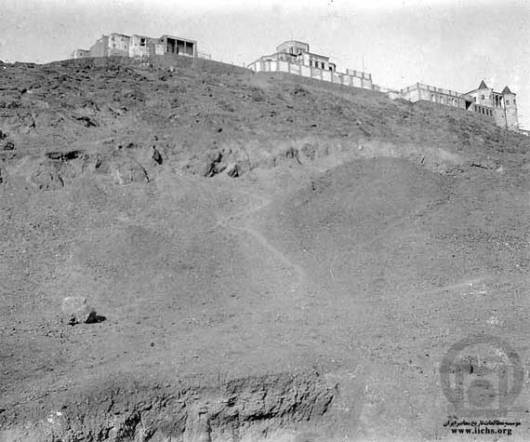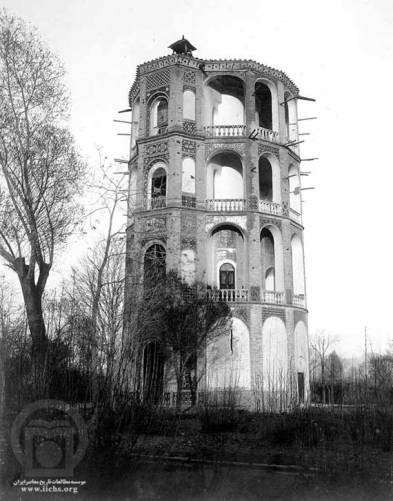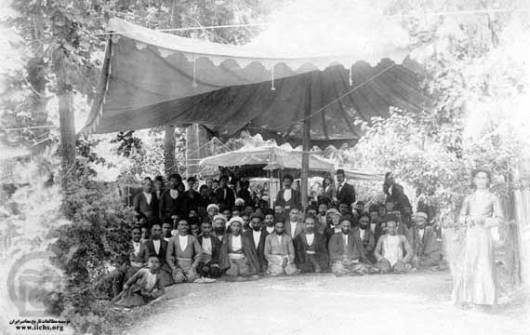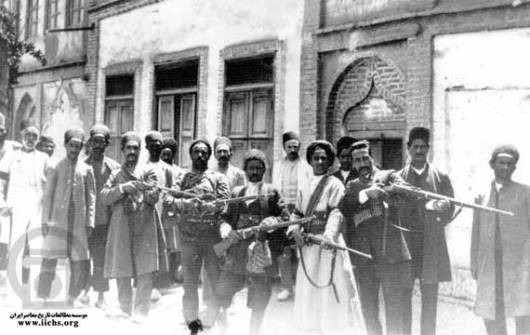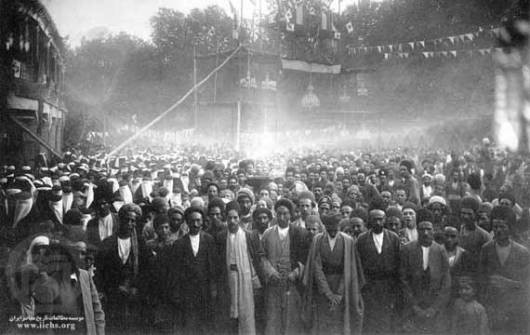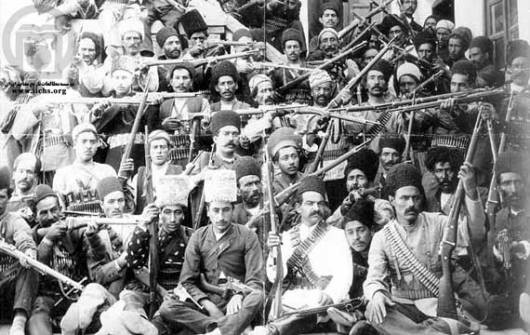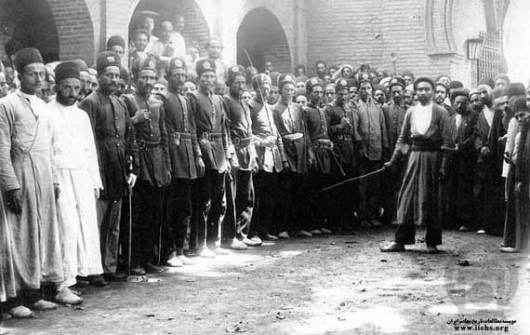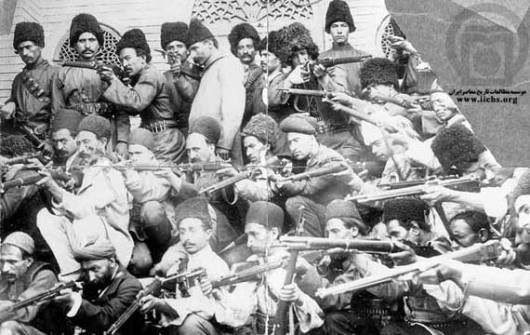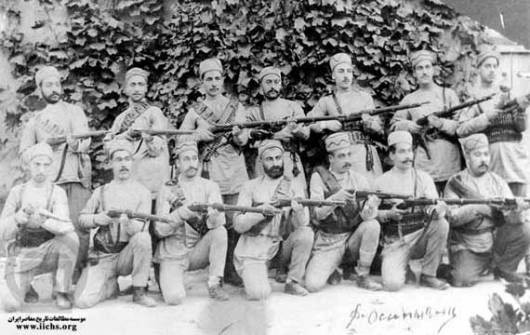Moussa Haqqani
Years between 1906 to 1912 have been a critical and fateful period in Iran’s contemporary history called constitutionalism. The Iranian campaign in seeking justice and constitution was realized in a period when much of the East was caught in the coil of tyranny. It is clear that high success of the movement could flourish in our country and the Eastern countries, and create very strong foundations for political, economic and cultural grounds to prevent any interventions of foreign countries.
The necessity to fight against tyranny and oppression of Qajar rulers had caused the early stages of movement to flow with exemplary strength and unity. So that the Shah had to sign the Constitutional command. At this stage a sit-in with the British Embassy without any sensible reasons took place of which the movement leaders were uninformed, and was followed with unpleasant consequences. The establishment of parliament and constitution indicated the beginning of structural changes in the Qajar government which itself became the subject of varied opinions within its followers.
The extremism of pro western ideas and patterns, and their ignoring the traditions and beliefs of people and proposing projects which were essentially incompatible with Iranian culture sow the seeds of discord among the ranks of constitutionalists, and added fuel to the conflicts of the various factions. In such circumstances, the emergence heterogeneous forums, publishing of letters extended the differences Some provisions of journals and letters as well as political pamphlets and the attitude of some constitutionalists and semi-hidden and hidden forums showed that their main goal in joining the movement was the establishment of pro western system in Iran and eventually merge the country in the capitalist world. The new Qajar Shah who had found out everything finished for himself sought coalition with some moderate constitutionalists to save some merits for himself. To realize this he attended the sessions of Jame Adamiat (a semi Masonic circle) with his Chancellor Ali Asgharkhan Atabak.
However, the subsequent conflicts between the constitutionalists on one hand and the entrance of constitutionalists with various drives to Tehran, caused MohammadAli Shah to take refuge in the Russian embassy.
The following pictures show some aspects of the Iranian’s struggle for the establishment of justice house and constitution.

Constitutional Movement on pictures
A group of constitutionalist businessmen, with the constitutional decree in the house of Hajj Aminozzarb (Constitutional decree in his hand)

Constitutional Movement on pictures
People welcoming Sattar Khan at the gate of Tehran Darvazeh Dowlat
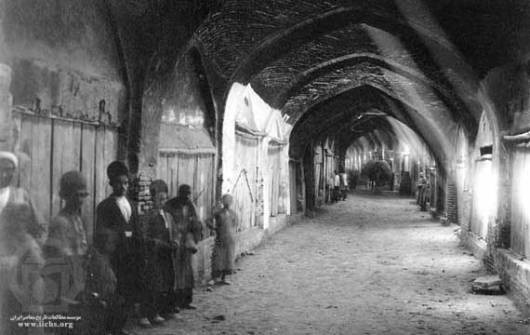
Constitutional Movement on pictures
Tehran Bazaaris strike on the eve of migration scholars to Qom to protest against Einoddowleh’s actions

Constitutional Movement on pictures
A group of government forces commanded by JafarQoli Khan Sardar Bahador on a military mission
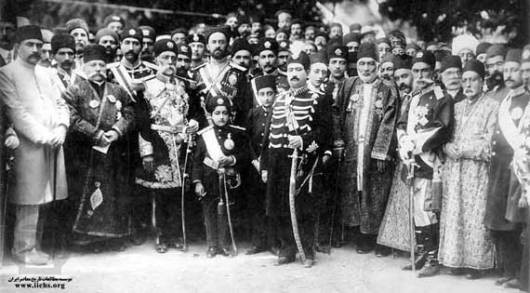
Constitutional Movement on pictures
Mohammad Ali Shah and a group of dignitaries and Derbaryan when settling in Bagheshah from right to left: MohammadVali Assefosaltaneh, Mahmoud ALaolmolk (Diba), MehdiQoli Majdoddowleh, Seyed Ali Movasseqoddowleh, Ahmad Khan Moshirosaltaneh, Prince Mashdy (Kamran Mirza’s son), HosseinQoli Mirza Nosratossaltaneh (Mohammad Ali Shah’s brother), Mohammad Ali Shah Qajar, Hassan Ali Mirza, Etezadolssaltaneh (Mohammad Ali Shah’s son), Ahmad Mirza Qajar (Crown Prince), Palconik Liakhov, Hossein Pasha khan, Amir Bahador, MohammadAli Khan Sardar Afkham (Agha Balakhan Sardar), Mostafa Hajeboddowleh Davallu

Constitutional Movement on pictures
A group of Constitutionalists and the Constitutional heads and figures, after the conquest of Tehran, AliQoli Khan Sardar Assad and Nezamoddowleh can be seen in the image
iichs.ir/vdcg.39wrak937j54a.html
